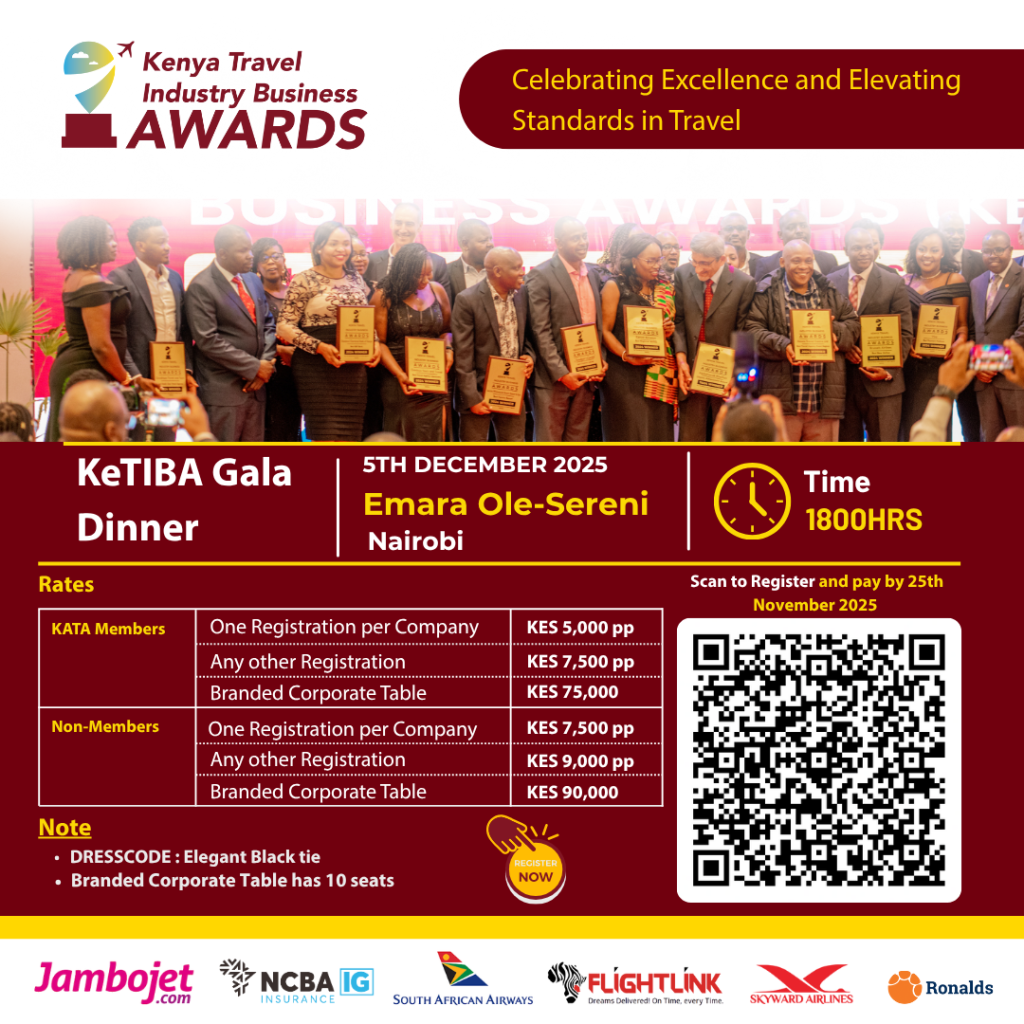A quiet but significant shift is taking place in the corporate travel sector as companies increasingly merge traditional travel management with broader mobility management. The change reflects evolving workforce patterns, sustainability demands, and a growing need for organizations to take a unified view of how employees move for work.
For decades, travel management focused almost exclusively on flights, hotels, and scheduled ground transport, while mobility management addressed employee relocation, commuting, and long-term assignments. Now, those once-separate functions are blending into one, driven by new pressures in the post-pandemic business landscape. Companies are rethinking their internal structures as hybrid work, dispersed teams, and geopolitical uncertainties reshape mobility needs.
Also Read: KATA Announces Finalists for the 2025 Kenya Travel Industry Business Awards (KeTIBA)
This convergence is being accelerated by shifting employee travel patterns. With hybrid and remote models now embedded in corporate culture, business trips are no longer limited to predictable point-to-point itineraries. Employees may combine business travel with remote work periods, or move temporarily across regions for project-based assignments. Organisations are turning to mobility budgets—rather than fixed travel categories—to manage this fluidity more effectively.
Cost efficiency is another force behind the shift. By bringing travel and mobility under a single umbrella, companies gain better visibility over total movement-related spending. Instead of managing travel, commuting, car hire, rideshares, and multimodal journeys separately, unified systems allow firms to track and control expenses in real time. This consolidation also simplifies vendor partnerships, policy design, and internal reporting.
Sustainability pressures are further driving the merger. As firms face rising expectations to reduce carbon emissions, integrated management enables them to steer employees toward greener alternatives—rail travel, electric vehicles, public transit, and shared mobility—while capturing emissions data more accurately. Companies increasingly see mobility strategy not as an operational necessity but as part of their environmental commitments.
Technology is also reshaping the landscape. Mobility-as-a-Service (MaaS) platforms, which combine multiple transport modes into a single digital interface, are becoming powerful tools for travel teams. These platforms allow employees to book end-to-end journeys that may include flights, trains, micromobility, and local transit, while giving finance teams centralised oversight and data.
The evolution is reshaping the role of the travel manager. No longer responsible solely for booking oversight, travel leaders are becoming strategic mobility managers who must understand the full spectrum of employee movement—from corporate travel to commuting patterns and even short-term relocations. Policies, too, are being re-engineered. Traditional travel rules now need to coexist with mobility allowances, flexible work policies, and new categories of employee movement.
Also Read: KATA Announces Finalists for the 2025 Kenya Travel Industry Business Awards (KeTIBA)
However, the transition is not without challenges. Many companies rely on legacy booking systems that were never designed for multimodal integration. Budget structures must be revisited, and departments such as finance, HR, and procurement must cooperate more closely. Adoption of new technology requires both training and cultural change, and data management remains a concern as mobility tracking expands.
Despite these complexities, industry analysts believe the merging of travel and mobility management is inevitable—and strategic. Companies that integrate the two functions gain clearer oversight, greater financial control, and a more seamless experience for employees navigating an increasingly complex world of work. As the boundaries between travel, work, and mobility continue to blur, the organisations that adapt early may be best positioned to thrive in the next era of corporate movement.
Source: BTNEurope.com





